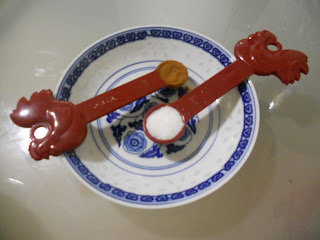There are few places I miss as much as my family's home in Alibag. The pandemic changed so much for everyone. For me, it took away my India. Bougainvillea blossoms and coconut trees. Walking along our yard's parapet and watching the sunset.
And the food. The tiniest shrimps in thick masala. Fish smeared in green chutney and steamed in banana leaf. Chikoos, my unbeautiful favorite fruit.
Flavor memories are strong. Thankfully, one can cook to bring them back to life.
I am also lucky in my friends in this new home. Living in the bay area means being surrounded by gorgeous produce. One of my friends brought home farm fresh tomatoes, and I reaped the bounty. (It fits the original theme of this blog, written as a harried student, that my board prep materials background the photo below).
Mumbai is home to Parsis, and many Parsi cafes. Sometime in my life there, Parsi tomato jam embedded itself in my sense memories. I cannot recall the last time I ate it, even in recent trips to the big city. Yet, it calls forth monsoon and late nights watching the Queen's necklace twinkle.
Parsi Tomato Jam
Adapted from Niloufer Ichaporia King's
Recipe
1.5 lbs ripe tomatoes, rough chop
¼ cup julienned ginger (about 1.5in long piece)
½ head sliced garlic (about ¼ cup)
¾ cup vinegar (I used a
mix of red wine vinegar and apple cider because that’s what I had; the original
recipe calls for cider or malt vinegar)
1 cup brown sugar
½ cup of raisins (optional; I had dried cranberries about, so
in they went)
1 tablespoon chili powder (I had Korean gochugaru which gave
a deep smoky spicy taste; the original recipe calls for cayenne pepper or hot
ground chili. This amount lends tasteable hotness, if you want a milder
version add ~1/2 tbsp)
1 small cinnamon stick
3 whole cloves
1 teaspoon salt
Grated peel of one lemon (optional; also original
recipe called for orange)
Roughly chop the tomatoes.
Put them in a heavy bottomed pan with the ginger, garlic, vinegar, raisins (optional),
sugar, chili powder, cinnamon, cloves, and salt.
Stir to combine everything,
and bring the mixture to a boil. Lower the heat and simmer uncovered. Stir
occasionally. You want the chutney to reach the consistency of a soft jam,
Niloufer’s original recipe
calls for double the tomatoes (and 4 hours of simmering), but my halved recipe
still took about 3 hours over very low heat. Low and slow allows flavor development, so try not to rush.
When you take the chutney
off the stove, adjust the salt, sugar, and vinegar to your liking. You can also
add more chili if you seek a kick. You want to do this while its still warm. Add the
lemon (or orange) peel at this time.
Niloufer recommends
letting the chutney sit for a day to fine-tune the balance and allow flavor merging. I let it sit out overnight with the lid on in my cool
kitchen, and it did beautifully.
I end with her words
because everyone should read them:
“Remember that this is a
chutney—it should be forceful, declamatory. You want a chutney to light up your
mouth, to have some punch. Sweet! Sour! Salty! Hot! The biggest mistake with
chutney is to think of it as a spiced jam. Never leave out the salt or
undersalt in the name of some diet deity. I tend to give the chutney away as
soon as I make it, so I don’t go to great lengths with the bottling process. I
just put the jars and tops through the dishwasher and give them an extra jolt of
boiling water before I fill them.”
I don’t have a dishwasher,
so I just swirled boiling water around my clean jars and left them upside down
to dry. The jam was finished within 2 weeks so I cannot vouch for the longevity
of this process. I can vouch for the immediate consumption of the jam.
Ways it was eaten:
·
With eggs on
toast
·
Scooped up on
chips
·
On crackers with many
different cheeses
·
Sandwich spread
(chicken sandwiches, yum)
·
Straight with a
spoon










































